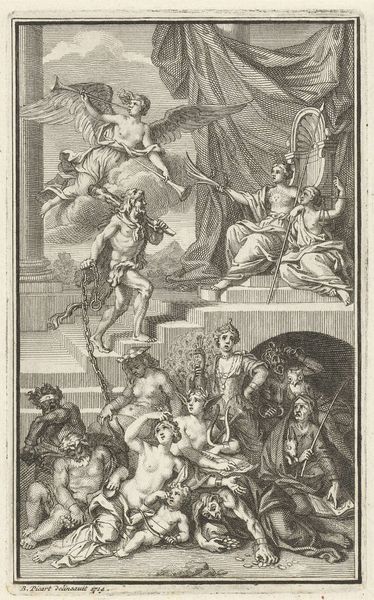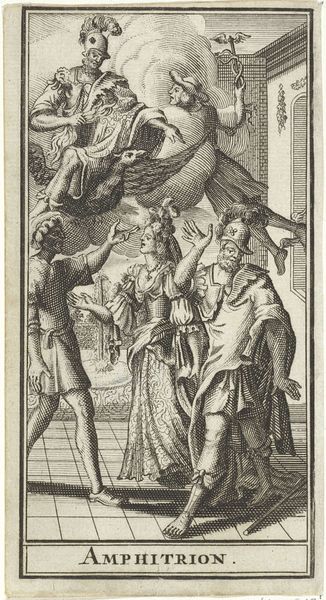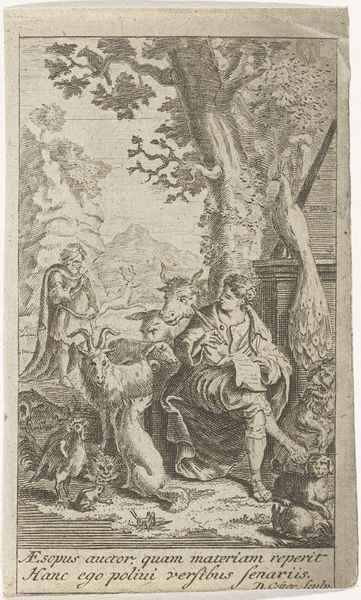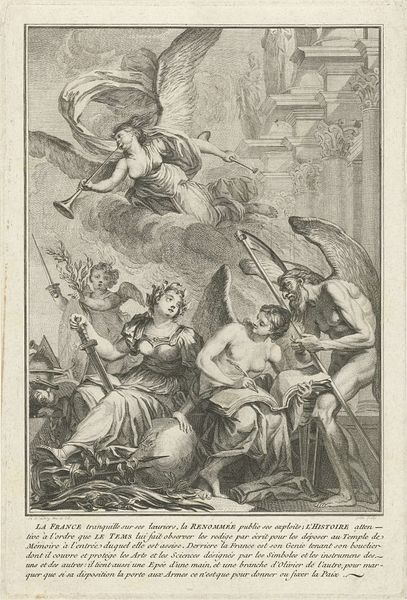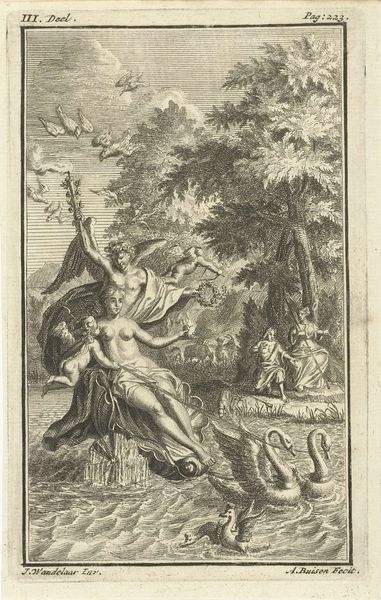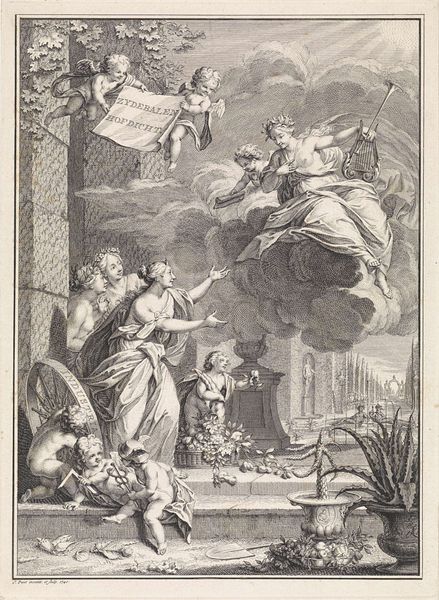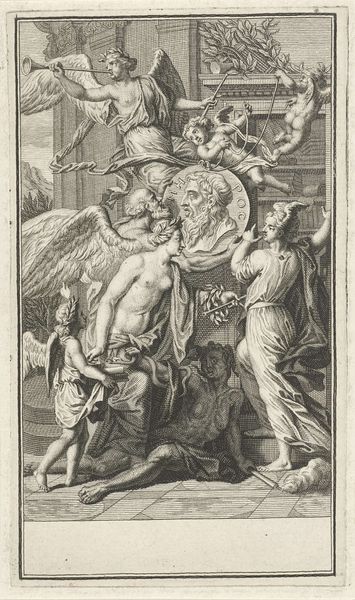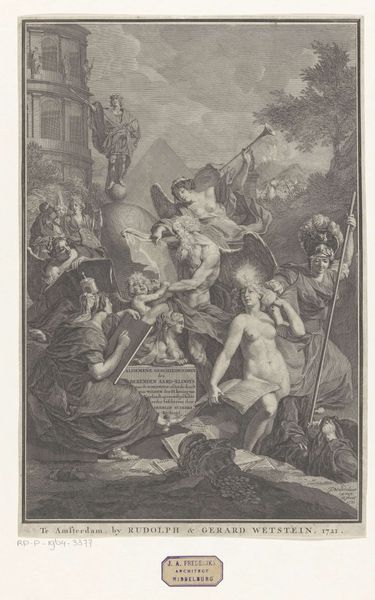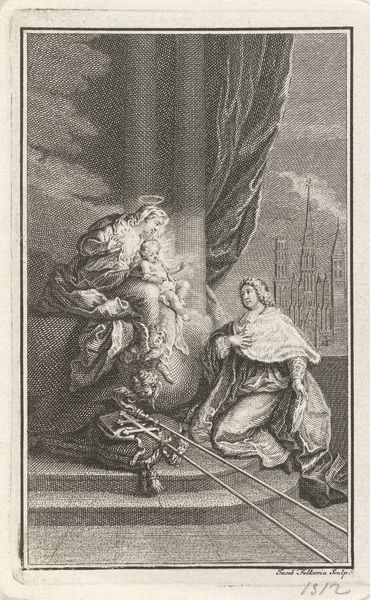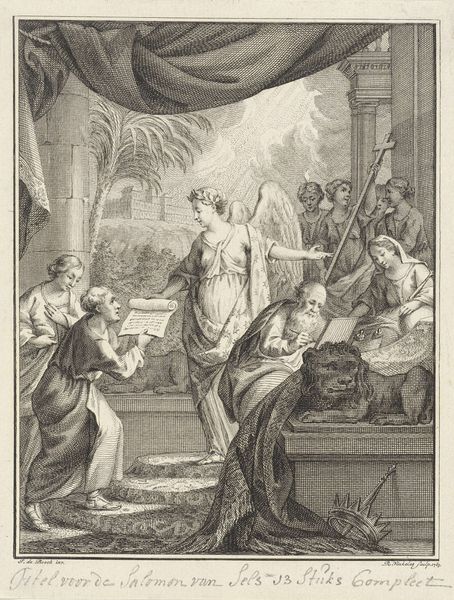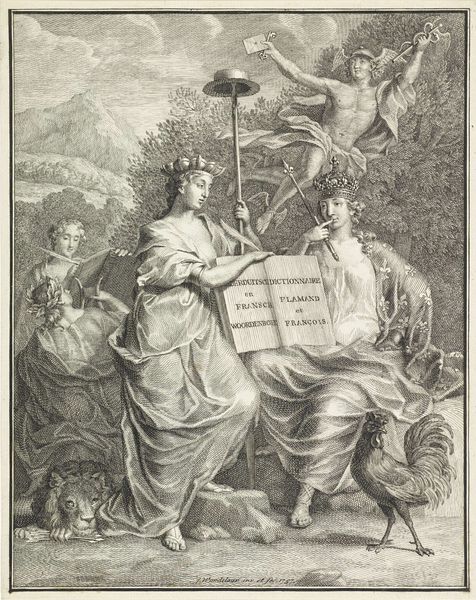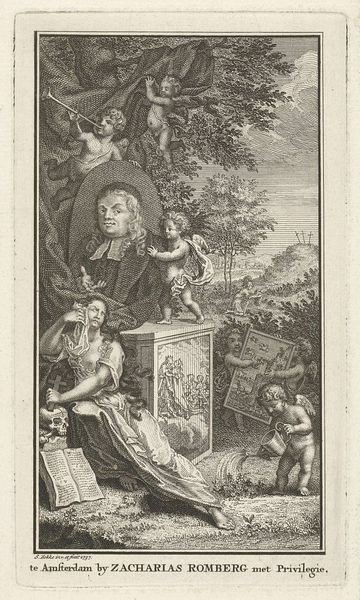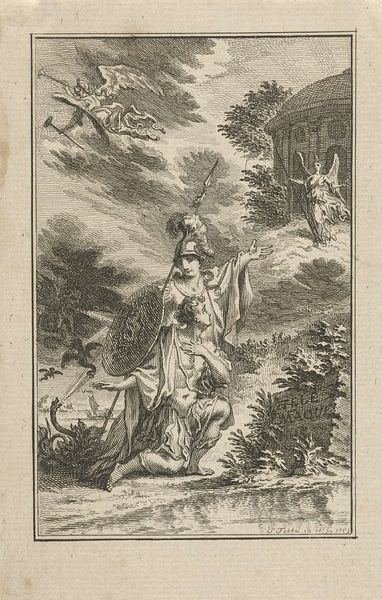
print, engraving
#
portrait
#
allegory
#
baroque
# print
#
landscape
#
engraving
Dimensions: height 152 mm, width 98 mm
Copyright: Rijks Museum: Open Domain
Curator: Simon Fokke created this engraving titled "Personificatie van de Kunsten aan haar schrijftafel" sometime between 1722 and 1784. What stands out to you first? Editor: It feels staged, theatrical even. All that detail rendered in such precise lines gives it a sense of controlled artifice. The lighting, too, feels deliberate, guiding the eye through the composition. Curator: The print certainly has layers. We see Minerva, goddess of wisdom and strategic warfare, interacting with an allegorical figure representing the Arts at her writing desk. In the backdrop, we have an image of the Pantheon. What narratives do you think Fokke is trying to establish by displaying this composition? Editor: Well, the composition places Minerva and the arts figure at center stage, while all of these objects seem placed within reach, signifying all the processes it takes to render and display art. Then we have the landscape, including the Pantheon in the distance—an apparent historical reference— that points to the influence of prior structures and classical conventions on artistic labor and cultural institutions. Curator: Interesting, situating the labor, and thus the significance, of art within a lineage. Consider how Minerva appears almost as a muse for this figure of the Arts, inspiring the written or visual record of culture itself. It brings forth discussions of gender dynamics too: is Minerva in a superior position, looming behind and watching? Editor: And notice the materiality conveyed through the engraving; the sharp lines delineating textures and forms. The drape of Minerva’s robes. I wonder what sort of paper the final print was transferred onto? Also what are the socio-economic conditions for printmaking and production at that time? These factors directly affects the production value and reception of artworks like this. Curator: Absolutely. This print gives us more than a visual—it is a tactile map of how culture represented and understood itself at a crucial juncture. A time period filled with political change. What can you read into Minerva, with her weapon of war? Editor: Considering those points of intersection gives us, well, multiple angles from which to grasp this image. Examining the historical relationship between class, art, and access opens up a whole network of possibilities for the work's interpretation. It makes me consider how cultural capital continues to operate today, in and out of art world spaces.
Comments
No comments
Be the first to comment and join the conversation on the ultimate creative platform.

